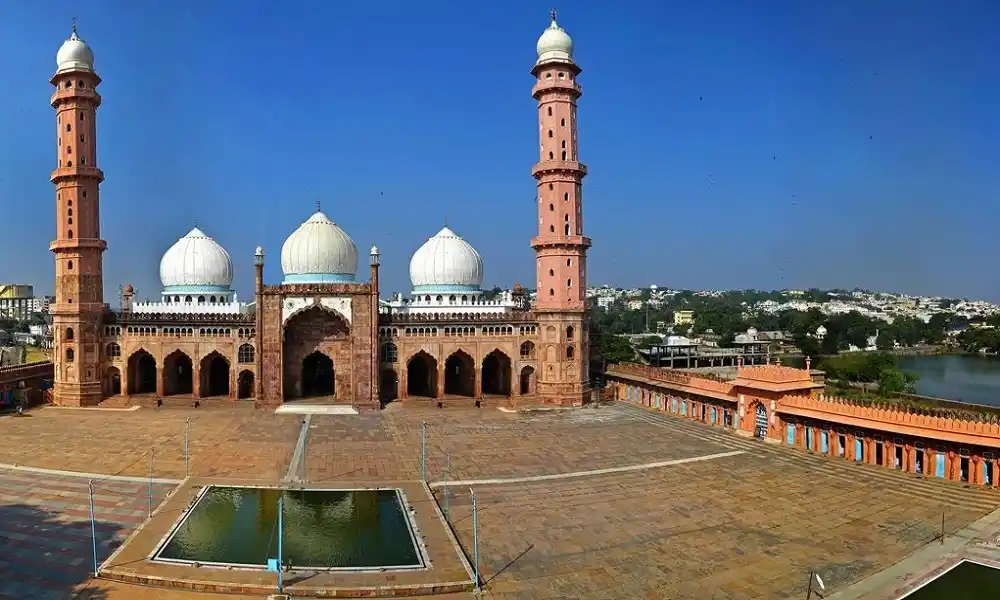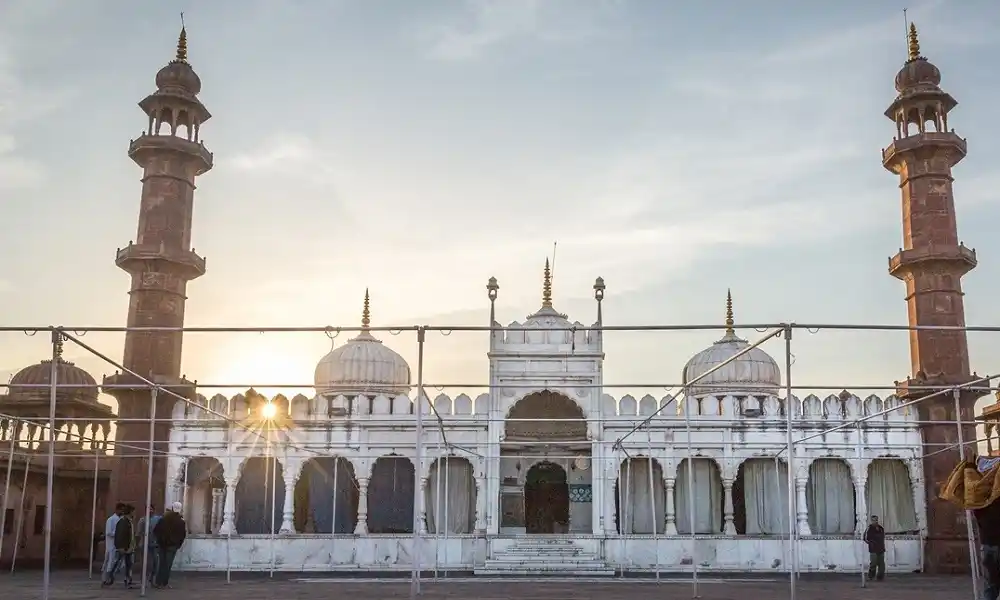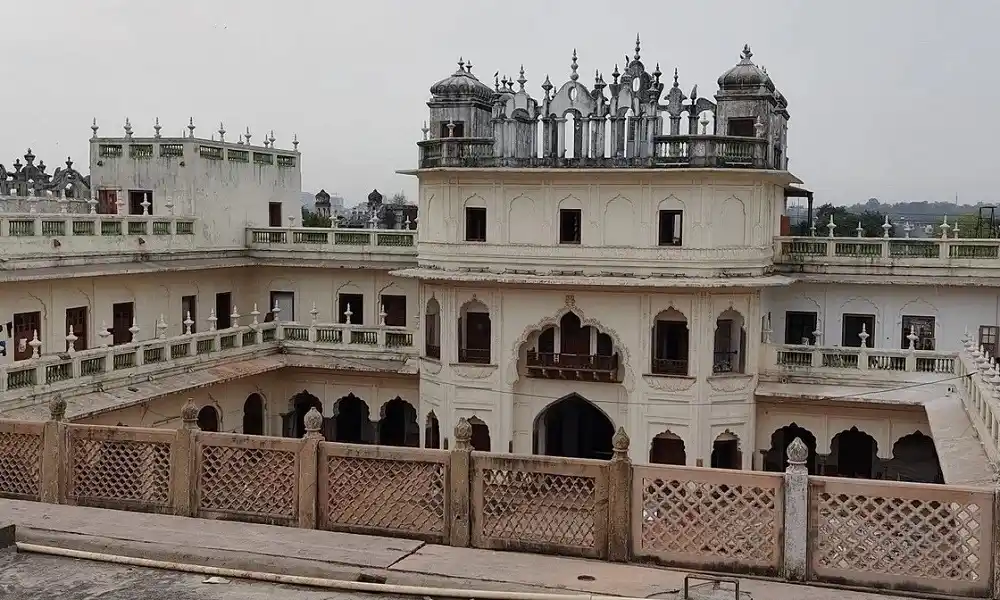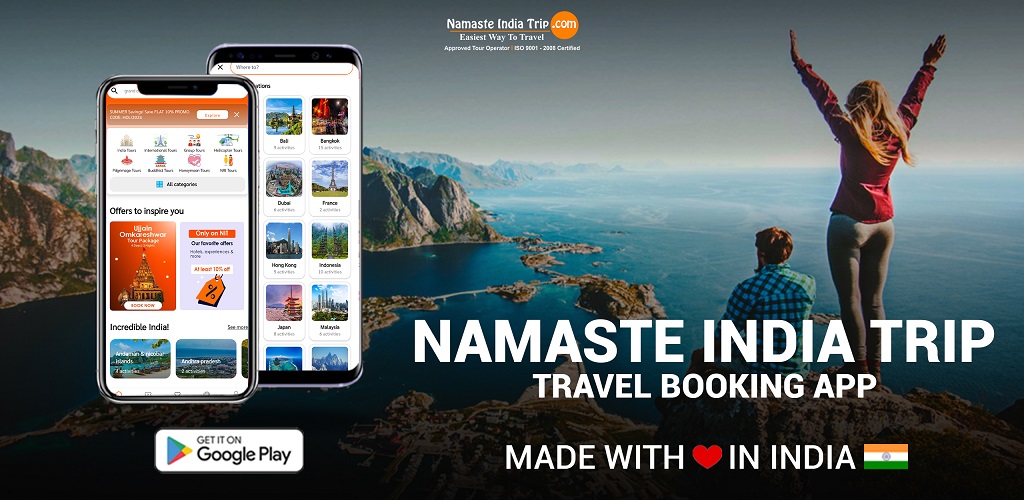Last Updated on 23/04/2025
Short Info
- Country: India
- State: Madhya Pradesh
- District: Bhopal
- Area: 298 square kilometers
- Elevation: 427 metres
- Population:4 lakhs
- Pin Code: 462—
- Telephone Code: 0755
- Time Zone: GMT plus 5:30
Bhopal
Bhopal is the capital of the central Indian state of Madhya Pradesh. It is also known as the “Lake City” because it consists of numerous natural lakes. Bhopal is one of the greenest cities in India and is home to several historical monuments. The old city showcases a harmonious blend of Hindu and Islamic cultures, as well as tradition and modernity. Bhopal houses a Master Control Facility for controlling the movement of satellites, the second such installation in India, established by the Indian Space Research Organisation (ISRO) in 2005.
Madhya Pradesh
Madhya Pradesh is the central province of India and is the second-largest state in India, after Rajasthan (it was the largest until the year 2000 when Chhattisgarh was carved out). Madhya Pradesh borders Uttar Pradesh to the north, Chhattisgarh to the east, Maharashtra to the south, and Gujarat and Rajasthan to the west.
History
Bhopal was founded by Paramara king Raja Bhoj in the 11th century AD. Originally, it was called ‘Bhojapal,’ after Raja Bhoj, and the “pal” referred to the dam built to form the lakes surrounding the city. The city’s golden period declined with the fall of the Paramaras, followed by pillaging and plundering.
In the early 18th century, after the decline of the Mughal Empire, an Afghan soldier from the Orakzai tribe, Dost Mohammad Khan, refounded the city. He brought Islamic influence to the culture and architecture of the new Bhopal. Later, Dost Mohammad met Queen Kamalapati and established control over the region. Bhopal survived the Maratha onslaught in the late 18th century and signed a peace treaty with the British in 1818.
From 1819 to 1926, Bhopal was ruled by four women rulers. Qudsia Begum was the first female ruler of modern-day Bhopal, succeeded by Sikandari Begum, followed by Shah Jehan Begum (often referred to as the ‘First Lady of India’ by the British), and finally, Kai Khusrau Jahan Begum, the last female ruler. The Begums are credited with initiating development projects in the city, such as waterworks, railways, and the postal system. Bhopal was one of the last princely states to sign the Instrument of Accession in 1947, and it joined the Indian Union in May 1949. After independence, Sindhi refugees from Pakistan were accommodated in the western suburbs of Bhopal. According to the States Reorganization Act of 1956, Bhopal became a part of Madhya Pradesh and was made its capital.
Geography
Bhopal’s average elevation is nearly 500 meters above sea level. The city is situated in the Malwa Plateau, north of the upper limit of the Vindhya Mountains in central India. It consists of several hills, including Idgah and Shyamla hills in the north, and Arera hills in the south. The city has two large lakes, the Upper Lake and the Lower Lake (locally called Bada Talab and Chhota Talab, respectively). The Upper Lake drains into the Kola River. The two lakes are connected by an overbridge.
Climate
Bhopal has a humid subtropical climate. Winters are mild and dry, while summers are hot. Winter lasts from late October to late March, and summer extends from late March to June. May is the peak of summer, with temperatures rising above 40°C, while January is the coldest month. The monsoon begins in late June and continues until September, bringing about 40 inches of rainfall, frequent thunderstorms, and floods. The weather remains humid during the monsoon season. The annual rainfall totals about 1,146 mm.
Attractions in and around Bhopal
- Laxmi Narayan Temple (Birla Mandir) south of the Lower Lake.
- A museum housing valuable sculptures from various places of Madhya Pradesh, such as Raisen, Sehore, Mandsaur, and Shahdol.
- Van Vihar National Park, located near the Upper Lake, which houses tigers, leopards, lions, and bears.
- Fish-shaped aquarium near the Lower Lake.
- Kheoni Wildlife Sanctuary, located about 125 km from Bhopal.
- Taj-ul-Masjid, one of the largest mosques in India, which was started by Shah Jehan Begum but completed later by the Government of India.
- Moti Masjid, built by Sikander Jahan Begum in 1860, designed in a style similar to Delhi’s Jama Masjid.
- Sadar Manzil, which served as a public hall during the reign of the early Bhopali rulers.
- Delawadi, a picturesque picnic spot.
- Gohar Mahal, Purana Kila (part of the 300-year-old fort of Queen Kamalapati).
- Bharat Bhavan, a museum with an art gallery and libraries housing poetry and music.
- Tribal Habitat, showcasing the tribal-dominated rural lifestyle of Madhya Pradesh.
- Ancient cave paintings at Bhimbetka, located in Raisen district, about 45 km from Bhopal.
- Bhojeshwar Temple at Bhojpur, known as the “Somnath of the East.”
- Jain Temples at Ashapuri.
- Chiklod Palace, Shaukat Mahal.
- Udayagiri Caves at Vidisha.
- Islamnagar Palace, built by Dost Mohammad Khan.
- Dhai Seedi Ki Masjid, one of the smallest mosques in Asia.
- Manua Bhan Ki Tekri (Mahavir Giri), a Jain pilgrimage center located about seven kilometers from Bhopal.


Moti Masjid

Sadar Manzil
Places like Sanchi, Pachmarhi, Khajuraho, Ujjain, Gwalior, Indore, and Mandu are other places in Madhya Pradesh that can be visited from Bhopal.
How to Reach Bhopal
- By Air: Raja Bhoj Airport serves Bhopal, connected by regular flights from New Delhi, Gwalior, Indore, and Mumbai.
- By Rail: Bhopal is well-connected by rail, situated at the crossroads of major railway routes such as Mumbai-Delhi and Delhi-Chennai. Vidisha and Hoshangabad are the nearest major railway stations (I tarsi junction is about 77 km from Bhopal).
- By Road: Bhopal is connected to nearby places like Sanchi (46 km), Vidisha, Indore (186 km), Ujjain (188 km), Mandu (292 km), and Jabalpur (295 km) via road. National Highways 12 (Jabalpur-Jaipur) and 86 (Kanpur-Dewas) run through Bhopal.
Culture and Cuisine
Bhopal may not be as famous as Gwalior in cultural terms, but it possesses rich cultural heritage. Bhopali crafts, including beadwork, embroidered velvet purses, silver jewelry, and curtains, are well-known.
The city is also famous for its culinary delights, such as Achar Gosht (pickled lamb), Keemas (minced meat), pulaos, Biryani Pilaf, Korma, Rogan Josh, and, last but not least, Bhopali Paan (betel leaf) and Bhopali Zarda (tobacco product).
Bhopal Gas Tragedy
The infamous Bhopal Gas Tragedy of December 1984 remains one of the worst industrial disasters in history. On that fateful night, a deadly methyl isocyanate gas leaked from the multinational Union Carbide’s insecticide plant on the outskirts of the city, causing over 5,000 deaths and affecting over 100,000 people with lifelong illnesses. Union Carbide agreed to pay $470 million in compensation, but this amount was widely criticized as insufficient.
Accommodations
Bhopal has several hotels catering to different budgets:
- Hotel Noor-us-Sabah
- The Residency Hotel
- Jehan Numa Palace Hotel
- Hotel Lake View Ashok
- Hotel Surya
- Nisarga Hotel
- Hotel Amer Palace
- Hotel Amar Vilas
- Hotel The Shagun
- Hotel Ranjits Lakeview
- Ivy Suites
- Hotel Sonali Regency
- The Mark Hotel & Club
Festivals
Every year, in January-February, the Manav Sangrahalaya hosts potters’ workshops, music and dance events, and open-air plays. It’s an event where local tribals demonstrate their skills. The three-day annual Ijtima held at Taj-ul-Masjid is another major event.
Other popular festivals include Diwali, Eid, Durga Puja, Vijaya Dashami, and Navratri.
Industry
Bhopal is home to various industries, including electrical goods, retail, cotton, chemicals, and jewelry. Flour milling, painting, sports equipment manufacturing, handicrafts (Zardori), and the production of Batuas are flourishing industries in the city. Automobile conversion is also a significant occupation.
Bharat Heavy Electricals Limited (BHEL), India’s largest engineering and manufacturing firm, has a unit in Bhopal. Mandideep, an industrial suburb south of the city, houses several renowned companies like Procter & Gamble, Fujitsu, Eicher, L&T, HEG, and Crompton Greaves Ltd. Bairagarh, a northwestern suburb, has become a major textile hub. Technological hubs are also emerging in Bhopal.
Transport
Bhopal has nine major bus terminals for long-distance services, such as Jawahar Chowk Stand, Halalpura Bus Stand, and Ayodhya Nagari Bus Stand. The city is also served by five major railway stations: Habibganj, Misrod, Sukhsewanagar, Mandideep, Nishatpura, and Bairagarh.
Facts about Bhopal
- Governance: Bhopal Municipality Corporation
- Religion: Hindus, Muslims, Christians, Sikhs, Jains, Buddhists
- Languages: Hindustani, Urdu, English, Marathi, Sindhi, Marwari, Bhopali (a regional dialect of Hindi). Persian was also historically spoken as a royal language.
- Education: Bhopal is home to several educational institutions, including Maulana Azad National Institute of Technology, IISER, School of Planning and Architecture, National Judicial Academy, and Gandhi Medical College.
- Newspapers: Central Chronicle, Nava Bharat
- Hospitals: LBS Hospital, Koh E Fiza Hospital, Bhopal Memorial Hospital, and Research Centre.
- Universities: Rajiv Gandhi Technical University, Makhanlal Chaturvedi National University of Journalism, Barkatullah University, National Law Institute University, Madhya Pradesh Bhoj Open University.
- Sports: Baba Ali Stadium, Tatya Tope Stadium, Aishbagh Stadium (hockey), and India’s first national sailing club, located on the Upper Lake.




 Call
Call WhatsApp
WhatsApp Enquiry
Enquiry